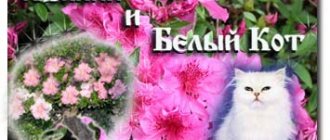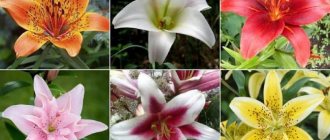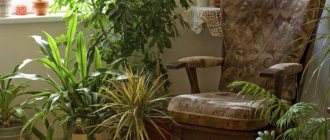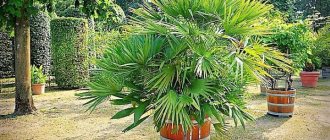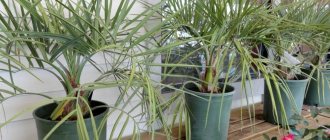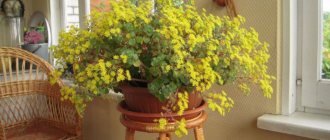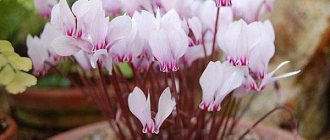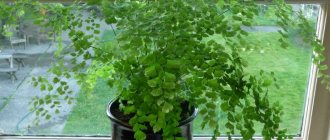Indoor plants are ideal for room decoration and help create an atmosphere of comfort and beauty. In addition to performing a decorative function, they make up for the lack of communication with nature, and are also able to disinfect toxic substances, absorb carbon dioxide, and destroy bacteria and microbes. Some of them can even be eaten. Medicinal plants deserve special attention, including such popular plants as aloe, geranium, kalanchoe, golden mustache, agave, and ficus.
About the Crassula
Popular rumor connects the fat woman with the material well-being of the family . Therefore, those who want to improve their financial situation should definitely have this plant in their home, not forgetting to bury a few coins in the pot. As the plant grows and develops, the material well-being of the owners of the house will increase.
a close energetic relationship between the money tree and its owners . If the people who live in the house are sick, then the fat plant absorbs the sick energy, begins to dry out, and its leaves fall off. After the owners recover, the tree can come to life again.
Crassula is able to purify indoor air and absorb unpleasant odors. The plant has medicinal properties and is used in folk medicine (mainly for external use).
Secrets of growing flowers
There are many secrets to growing indoor plants. So, for example, the soil for a house plant is most often combined from humus, sand, and fertile soil. Nothing will grow on empty land, and soil oversaturated with humus and fertilizers can burn the plant. There is a rule. The more delicate the plant’s root system, the lighter the soil should be. So for ferns, two-thirds of the soil should consist of leaf humus. For pelargonium and fuchsia, the soil contains equal parts of leaf humus of turf and clay soil. Bulbous plants, as well as plants with strong roots (palm trees, dracaenas) require heavier soil, containing up to one-third clay soil. Orchids make up a special caste. The soil for orchids is made up of chopped bog moss, fern roots, peat and clay shards.
As plants grow, they are often transplanted into larger pots. When replanting, you must try to damage the root system of the plant as little as possible. To do this, the plant is usually dried out a little (not watered), then a hole is made in a larger pot, preferably with the same pot in which the plant grew before. The plant with the root ball is carefully transferred into the resulting hole, after which the plant is watered, allowing the water to connect the new soil with the root ball. The transplanted plant usually “gets sick” for several days after transplantation, so you should not immediately place it in bright sun, give it a few days to adapt to the new vessel.
It's no secret that house plants sometimes get sick. Leaf aphids, hairy aphids, shield aphids, thrips, red spiders and other small parasites strive to feast on your plant (especially, for some reason, they love roses). You can get rid of such parasites with an aqueous infusion of shag or a soap-kerosene solution, which is applied to the plant for two to three days, after which it is washed off. If your plant is sick, it is advisable to temporarily remove it to a “quarantine zone”, away from healthy plants and return it to its original place only after it has fully recovered.
Adherents of horoscopes often select house plants with a certain meaning. It should be noted that the zodiac sign of the plant is indicated here, not its owner. What do plants of different zodiac signs promise us?
About geranium
Geranium is considered a talisman flower . It harmonizes the atmosphere in the house and protects its owners from quarrels and misfortunes. Geranium leaves have phytoncidal properties. The plant actively releases essential oil vapors, which can be easily felt by lightly rubbing the leaf. Inhaling the scent of geranium calms the nervous system, improves sleep, neutralizes irritability and evens out the disturbed biofield.
Under good conditions and sufficient lighting, geranium blooms almost all year round.
Indoor flowers for children's rooms
If you properly organize a green corner in a children's room, it will help enliven the room and make it more comfortable.
Children's room with indoor flowers
When choosing colors for a children's room, you need to pay attention to the following:
- required care - each type of flower requires certain care (some plants are very capricious);
- which side of the world the windows of the room face - if the windows face the south or west, then light-loving plants are suitable for this room; if the windows face north and not much light gets into the room, then shade-loving and shade-tolerant flowers are more suitable for such a room;
- plant size - if the baby’s room is small, then you should not put too large large-leafed plants there, plants in tubs and flowerpots, etc.;
- safety - flowers must be safe for the child. The plants should not have sharp thorns or thorns, and flowering should not be accompanied by a strong aroma.
Important! Before buying indoor flowers for your children's room, you should definitely consult with a florist. The fact is that some types of plants, including those that grow at home, can contain toxic substances and pose a threat to the baby’s health.
What flowers can be in the nursery
Listed below are the main common types of indoor plants that can be placed in a child's room and entrusted to the child to care for them.
Living corner in the children's room
Note: A good option would be to equip a “living corner” in the nursery, where, in addition to plants, you can put a cage with a hamster or parrot, or an aquarium with fish.
Dracaena
This indoor flower purifies the indoor air and absorbs toxins.
Dracaena domestica
Chlorophytum
This flower is also popularly called “spider”. It has bactericidal properties and cleans the air in the room well.
Chlorophytum domestica
Geranium
Eliminates pathogens and has a calming effect.
Homemade geranium
Kalanchoe
This is an unpretentious hypoallergenic plant with bactericidal properties. There are many types of this plant. You can put any type in the children's room.
Kalanchoe laciniata
Violet
A rather unpretentious, but beautifully flowering plant will be an excellent decoration for a child’s room. Girls will especially like blooming violets.
Violet domestica
Lemon Tree
Citrus leaves saturate the air in the room with essential oils; the plant has bactericidal properties. This plant can be grown with a baby from an ordinary lemon seed. You can also plant orange or tangerine seeds. Under good conditions and care, the tree can bloom and even bear fruit.
Lemon tree at home
Tradescantia indoors
This plant is very unpretentious and can even grow in water. Any type of this flower is suitable for a children's room.
Blooming Tradescantia
Spathiphyllum
This flower is also popularly called “women’s happiness.” The plant attracts attention not only with its interesting flowers, which retain their excellent appearance for quite a long time, but also with its wide, numerous leaves.
Woman's happiness
Decembrists
This indoor flower blooms beautifully, as a rule, in winter, which is why it got its name (according to one version).
Photo of the Decembrist
Sansevieria
This plant is also known as “pike tail” and “mother-in-law’s tongue.” This is a very unpretentious houseplant
Sansevieria photo
indoor hibiscus
This plant is also called Chinese rose. Young, small specimens are well suited for a children's room.
Chinese rose
Cypress
Outwardly it resembles a decorative Christmas tree. This plant is able to purify the air in the room, accumulating house dust, bacteria, etc. on its branches.
Cypress photo
Peperomia
Despite the fact that this plant is very unpretentious, not all of its species can be grown indoors.
Peperomia photo
Begonia
Thanks to the essential oils released into the air, begonia is one of the useful indoor flowers for a nursery.
Blooming begonia
What flowers are not allowed?
It is important to note that not all indoor flowers can be placed in a children's room. The following are plants that should not be placed near children.
Dangerous indoor plants
Monstera
Despite the beautiful appearance of the leaves, the sap of the plant is quite poisonous.
House Monstera
Croton
Croton can cause vomiting and burns on the skin. It is especially dangerous if the juice of this plant enters the bloodstream through an open wound.
Croton home
Adenium
This is one of the most poisonous plants.
Adenium photo
Home cactus
The sharp spines of cacti can injure children.
cacti
Euphorbia indoors
The juice of indoor milkweed is quite poisonous.
Spurge
Aglaonema
Despite its beauty, the plant can cause allergies.
Photo of aglaonema
Clivia
A beautiful, but rather poisonous plant.
Photo of clivia
Ficus
Ficus is often called the “family flower.” It has a lot of useful properties:
- Relieves insomnia.
- Improves indoor air.
- Absorbs formaldehyde, ammonia, toluene.
- Relieves irritability and calms.
In addition, ficus is credited with miraculous properties that help childless couples conceive a child. Spouses dreaming of a new baby are advised to place a ficus tree in the bedroom, carefully care for it - and then the long-awaited pregnancy will not be long in coming.
About violet
These plants are extremely unpretentious . For good growth and plant violet requires light airy soil, uniform watering, no sudden changes in conditions, constant air temperature, a well-lit place and protection from direct sunlight. Plants reproduce by leaves. It is best to cut them from the second row.
Violets secrete phytoncides , which have a beneficial effect on the human nervous system, increase performance and help cope with bad mood and troubles. It is not recommended to keep the plant in the bedroom, since violet produces oxygen during the day and carbon dioxide at night, which can affect the quality of sleep and lead to headaches. People with a difficult character or overly sentimental should not get a violet.
It is believed that white violets clear the space of heavy thoughts and negative feelings and maintain a clean atmosphere in the house. Such violets have a beneficial effect on children with increased nervousness. Pink violets put you in a romantic mood, burgundy ones give you strength to achieve your goal, red ones attract money to the house, purple ones extinguish scandals.
Many gardeners refuse to keep violets in the house due to a number of superstitions . For example, it is believed that a girl who grows violets on her windowsill may be left without a groom. According to another sign, the plant can drive a man out of the house by upsetting the balance between male and female energy. At the same time, it is believed that violets standing on the window protect the house from aggressive energy coming from outside.
Presentation “Secrets of indoor plants”: interesting facts about the world around us (grade 4)
Slide 1
Secrets of indoor plants
Slide 2
Every day, in the hustle and bustle of everyday worries, we catch a glimpse of some plants on the streets, in shops, in offices, but we only see them. The wonderful, transforming energy of harmony in which plants live can go unnoticed by humans in the rush of life. No matter how much nature is glorified, it will remain misunderstood by us if we do not interact with it.
Slide 3
The measured life of nature is good in itself, but how much wisdom is stored in it for the diligent student! A grain, a sprout, leaves, flowers, fruits... Our life develops according to the same pattern. Any of our actions, like a plant - from a seed, begins with an idea, a plan, with a spark of feeling, desire. But when the grain flaps opened and a sprout appeared on the surface of the earth, our ideas and plans become known to others, because we begin to act. A young sprout emerges from the ground and the first true leaves appear on the young plant. The young plant grows in breadth and height, and human activity becomes more and more widespread. The first buds of a plant do not guarantee that all the flowers will bloom and each will bear fruit. Likewise, for people, not every human hope will come true. Plants - to ripen fruits and seeds, live in harmony with the environment. Of course, this is not the only scheme with which one can describe the development of all life on Earth. Plants comply with them, but humans do not always. In a hurry to get results, we often begin to act thoughtlessly, without grain, we do not allow the matter to mature and develop, or we rush around, we cannot begin to act, not knowing and not being able to use the driving energy.
Slide 4
Laws of nature Let's stop, calm down, sit in front of a flower. Here it is, growing in a pot on the windowsill. Look: fruits do not appear before flowering and there will be no flowers before leaves; there are no revolutions in nature. We were deceived by calling for revolutionary activity, for turning rivers and decisively breaking everything in the world. All this is nothing more than an attempt to get fruit before flowering. How much suffering this violence has already brought to humanity! Where is the happiness? It is still there, beyond the horizon, and we are still the same: greedy, evil, vain - ugly in our disharmony, and unhappy. Where to go? Yes, here it is, our quiet mentor - a flower. Let's learn from him to live correctly, without violating the laws of existence.
Slide 5
Nature and WE The development of all life on Earth follows a single system. Human society is gradually changing, laws that seemed unshakable are becoming a thing of the past, turning into outdated prejudices, they are being replaced by new institutions, new tasks, and how is the plant world changing, adapting to changes in living conditions: to a new climate, a different composition of the soil and atmosphere . Every century and even decade, life poses new challenges for the inhabitants of the Earth. Those who managed to sense, understand, and master a new task in time do not lag behind in development and keep up with the times. Plants always keep up with the times, sensitively catching the slightest changes, because they are driven by natural evolution. A person who is friends with plants receives their subtle sensitivity, and he gets the opportunity to feel the tasks set by time earlier, and therefore change earlier, speed up the process of his evolution. Indoor plants, especially those that have been living in our house for a long time, adapt to the effects of reinforced concrete walls, synthetic materials, household appliances and electronics - all those objects that are unfavorable in their radiation that are in the house. Plants change themselves, adapt - and adapt to themselves, changing and ennobling the situation in which they find themselves to the best of their ability. If we change ourselves, we change the world. Isn't this one of the laws of harmony? And a person whose defense system is stronger than that of plants, on the contrary, will most likely resist external influences, thereby increasing the load on his immunity. Instead of trying to achieve unity with the environment, as nature demands, man is at war with the world, and his shield - spiritual and physical immunity - is weakened. This is the reason for the weakening of the immune system.
Slide 6
Our thoughts Our thoughts are not locked in our heads, like in a box. If we think not about ourselves, but about something or someone, thoughts move from us to this object or creature, and the thoughts of those who think about us fly to us. If we think about ourselves, about our problems, then these thoughts circle around us. We pronounce a word - and its energy rushes to the object or person we are talking about, or remains next to us if we are talking about ourselves. Over time, these energies dissipate and find their place in space, but the impact they have on our mental and physical state remains with us.
Slide 7
Words and plants The energy of bad thoughts and words poisons the atmosphere and spoils our health; Good energy warms the soul and harmonizes the functioning of physical organs. And here it must be said that the leaves will not absorb the energy of pure thoughts and words, because they need the waste product of the human body - carbon dioxide. Indoor plants absorb only what is unnecessary and harmful to humans - the energy of unclean thoughts and words, and release oxygen, useful, clean energies into the atmosphere, therefore one of the secret properties of leaves is to help a person form useful thoughts, as they influence the thinking process and human speech. Look how varied the shape, size and texture of the leaves are: narrow and wide, heart-shaped and oval-shaped, leathery and delicate, large and tiny - it’s impossible to list everything! So thoughts and words are just as different and become “food” or the fruit of the support of various leaves.
Slide 8
Flowers in our lives Plant flowers that bring light and joy to our homes and hearts are under the protection of the Sun, and in astrology it is associated with joy, love, and creativity. Often flowers do not bloom for sad people, but for cheerful people even plants that rarely bloom at home bloom. Flowers help develop creativity and have a beneficial effect on the cardiovascular system.
Slide 9
Myrtle Indoor plants, recreating nature in miniature, are living beings with their own positive qualities. It would seem that what can be said about why housing needs living plants in the house. Firstly, it's decoration. Secondly, rest for the eyes, mind and nerves. Thirdly, plants release phytoncides, which improve the atmosphere in the house. Where the common myrtle grows, there are half as many pathogenic microorganisms, as well as ASPARAGUS, the so-called Chinese rose.
Slide 10
GERANIUM GERANIUM absorbs fumes, dampness, and refreshes a musty room. At the same time, it helps relieve internal tension.
Slide 11
IVIES IVIES, VINES with waxy leaves, are essentially parasitic plants. However, they perfectly process alien energy brought into the house from the outside. They simply need to be used to clean rooms. In addition, they are useful in the rooms of people suffering from nervous sleep disorders and insomnia.
Slide 12
Peperomia. Tradescantia. They reduce the risk and course of cancer in their owner. The larger the specimen, the more effective they are. Plants with erect stems are most effective. And among Tradescantia, the most powerful are those varieties that have thick and large fleshy leaves.
Slide 13
Begonia and ficus So begonias and ficus have a place in houses where there are a lot of people leaving their energies. These plants first absorb energy smog, filter it, and then release only positive energy to the home.
Slide 14
PALM TREES PALM TREES are plants that are not suitable for small spaces. Moreover, streams of cutting energy seem to flow from their leaves, so you should stay away from them. At the same time, they are indispensable in order to destroy any energy anomaly in the room.
Slide 15
Cacti - protect their owner from radiation from a TV or monitor screen
Slide 16
Carefully! Vampire plants!!! There have long been signs associated with indoor plants, according to which some of them have such strong bioenergy that people cannot resist it. They can only obey.
Slide 17
Monstera Monstera is believed to literally pump energy out of a person, and its own negative energy affects every inhabitant of the house. That is why keeping monstera in residential premises is not only undesirable, but simply dangerous.
Slide 18
Scindapsus is a liana-like plant, which is also popularly called 'husband'. If you believe in this or you already have such experience, then before you throw the scindapsus out the window, think: 'Who is it all about: the plant, to which your husband is very indifferent, or is it still about you?' From an energetic point of view, this plant is indispensable for those who are overwhelmed by uninvited astral visitors, including those from “that plane.” Moreover, it is immediately clear from the scindapsus that it has “ate” someone - the leaves become glossy, thick and clear liquid drips from them.
Slide 19
Philodendron A relative of the monstera, the philodendron has the same properties.
Slide 20
Thuja and cypress Thuja and cypress are dangerous for the home - the energy of these plants is so heavy that you should not only keep them in the room, but even plant them near the house. It is not for nothing that in ancient times the idea of these plants was associated with death.
Slide 21
Signs and advice Ivy (popularly known as “husband”) survives from men’s homes: married couples divorce or have conflicts, adult sons move away or leave home. In general, there are many different signs and superstitions associated with vines, most often negative. Allegedly, these are plants that take energy from people, cause divorce and celibacy, and increase melancholy and loneliness.
Slide 22
Signs and tips Crassula vulgare (money tree) brings money. If there are small leaves on it, then the change will jingle in your pocket, if there are large leaves, the bills will crunch. Aloe (agave) protects against uninvited guests and accidents. lack of love, dissatisfaction with it or unrequited feelings. gladioli, irises and other flowers on long stems are loved by broad and impulsive natures. Such people are distinguished by their love for nature. Violets and pansies are preferred by people who are capable of great passion, but hide it. Lilacs are loved by people endowed with great vitality and who love to have fun. Chrysanthemums symbolize love of life and temperament. Artificial flowers in general are a denial of life. Loving them indicates pettiness, self-centeredness, sadness, apathy and fatigue. Fragranceless flowers, as a rule, are liked by fragile and emotionally unstable people. Flowers with a strong suffocating odor are preferred by passionate or rude people.
Slide 23
Let's summarize For the most part, indoor plants are designed to cleanse and improve the atmosphere in the house. But it can be poisoned by humans to such an extent that plants cannot cope, and their natural filter fails. Any plants grow poorly where people with very difficult characters live, pessimists who are tired of life and who do not know how to live with their energy. Constantly dissatisfied and irritated with something, they generate negative energy that clogs up the space. And in this case, no vampire plant can compare with a human energy vampire. The words of the classic are appropriate here: “There is no point in blaming the mirror if your face is crooked.” I hope that these recommendations will be useful to you when choosing plants for your home.
Slide 24
Sources 1. Pevnaya T.K. Houseplants: Energy protectors or vampires. M. RIPOL classic. 2006 2. http : //www. nature-home. Ru / (site of Svetlana Kvasnina) 3. http: //www. ripol.ru 4. https://floristics.info/images/plants_photo/peperomia/s/00.jpg 5. https://floristics.info/images/plants_photo/tradescantia/s/00.jpg 6.https:/ /www.sadovniki.info/wp-content/uploads/2014/05/3105-97.jpg 7. https://ukrflowers.info/img/Begonija1.jpg 8. https://www.sad2.info/wp -content/uploads/2014/05/2905-14.jpg 9. https://fotografii-cvetov.ru/img/palmy-komnatnye/palmy-komnatnye-foto-12.jpg 10. https://www.cactuslove .ru/cactuses/big_1733.jpg 11. https://flora.dobro-est.com/images/flora/enciklopedia_rasteniy/sadovye_rasteniya/monstera/monstera_index.jpg 12. https://www.botanichka.ru/wp-content /uploads/2010/02/Monstera-4-520×520.jpg 13. https://www.sad2.info/wp-content/uploads/2014/06/0306-8.jpg 14. https://www .sad2.info/wp-content/uploads/2014/06/0306a-48.jpg 15. https://www.botanichka.ru/wp-content/uploads/2011/03/Thuja2-520×693.jpg 16 https://fotografii-cvetov.ru/img/kiparis/kiparis-foto-9.jpg
About the plant golden mustache
The golden mustache is not particularly beautiful or elegant, but it has healing properties and is capable of rejuvenating the body. In folk medicine, golden mustache is used to make medicinal infusions, tinctures, ointments, balms, and syrups that have many beneficial properties:
- Improves heart function.
- They have a wound-healing and regenerating effect.
- They have an antibacterial effect.
- Increases immunity.
- They have antiallergic properties.
- They have an anti-inflammatory effect.
- Eliminate pain syndrome.
About rosemary
Rosemary does not require special care , but does not tolerate excessive watering or proximity to roses. In their presence, he may completely wither away.
The energy of rosemary calms unrestrained people, extinguishes scandals and quarrels, relieves fatigue and relieves anxiety and fear.
Rosemary tincture is used in folk medicine for neuritis, thrombophlebitis and as a wound healing agent. Fresh and dried rosemary leaves are added to soups, salads, and meat dishes.
About orchids
Orchids are prized for their striking beauty and grace . However, keeping them in the bedroom is strictly not recommended, as the aroma of this plant can cause headaches, nausea and anxiety. An orchid is a typical vampire flower, capable of pumping out strength and energy. It is not recommended to have orchids for people with diseases of the nervous system, as well as those who are indecisive and apathetic.
Other interesting facts about indoor plants
- Azalea perfectly relieves eye fatigue; just admire this beauty for half an hour and your eyes will feel better.
- Flowers do not tolerate alcohol fumes, with the exception of azalea.
- Eucalyptus can stop tissue breakdown.
- Cyclamen can live 25-75 years .
- An adult aloe bush can survive without water for several years.
- Chlorophytum perfectly purifies the air. In one hour, an adult plant can clear the air of bacteria by almost 100% .
- Some indoor plants can trigger allergies and asthma.
- Cacti protect against electromagnetic radiation.
Poisonous plants
Houseplants can be not only beautiful, but also dangerous. For example, plants of the euphorbia and nightshade genus are very harmful to children and pets. The variegated fruits of the nightshade are so alluring, you just want to try them, but they are poisonous. If there are small children in the house, you should refrain from growing such plants.
Cats also like to try and chew everything, and such plants are also dangerous for them. If you have a pet cat in your house, then pay attention to the plants you are going to grow so as not to harm the animal.
